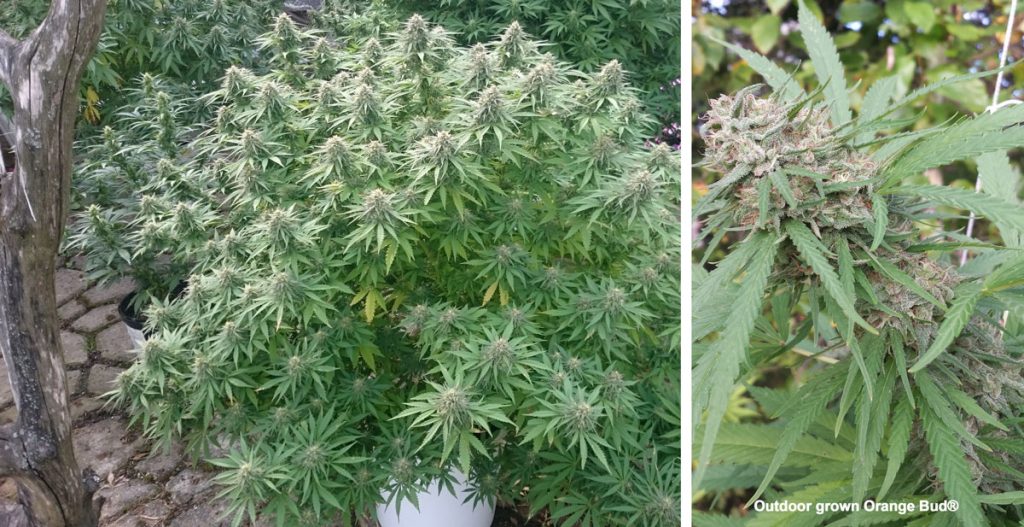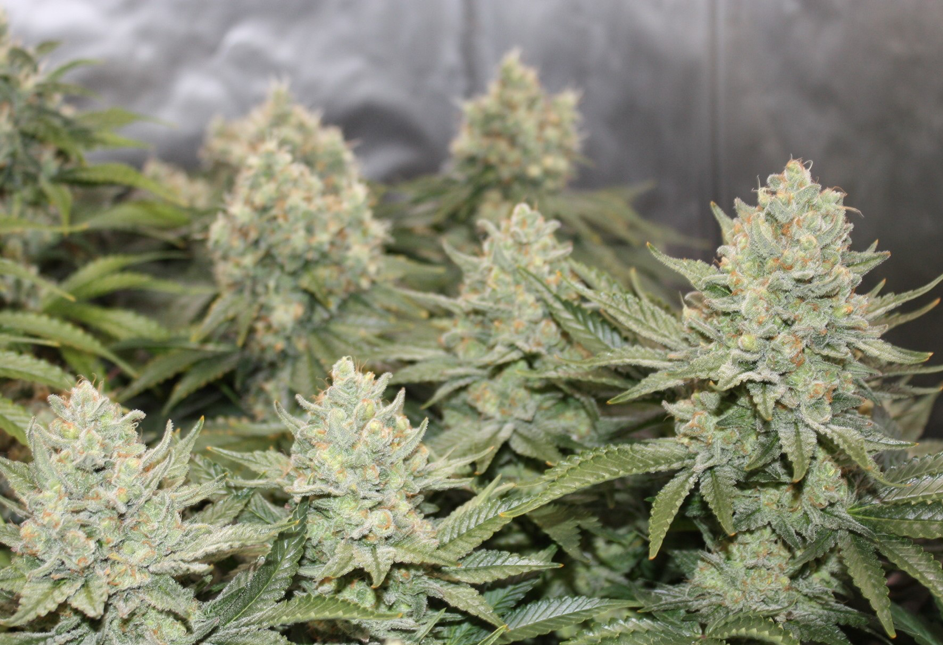The history of cannabis genetics can be a fascinating thing. Whether it’s the origins of the Skunk family, Blueberry, Haze or Autoflowering cannabis, each genetic line has a story to be told.
Sometimes the seed companies and breeders just know when they are onto some really special or unusual cannabis breeding, and if they are right the genetics remain relevant and popular for decades. Here at Dutch Passion the team are often asked about the origin of the celebrated ‘Orange’ family of genetics, which produced Orange Bud, California Orange and many other hybrids over the years.
The mythical citrus-scented cannabis cultivars heritage.
It all started in California back in the 1970s. Mainstream interest in recreational cannabis was gathering real momentum, and many of the best early breeders and small growing collectives had gravitated towards California.
One of the breeding curiosities of the time was the mythical citrus-scented cannabis cultivars with 50% indica and 50% sativa heritage. Squeeze the buds and you would get a refreshing tang of zesty citrus aroma, smoke them and you experienced a great ‘up’ high – or so went the story.
As knowledge and expertise in cannabis cultivation increased, some of the early Californian cannabis connoisseurs were appreciating the differences between various cannabis genetics in taste, aroma and effect. Some of the best cannabis genetics were already becoming early favorites, and were used in breeding.
California’s gathering of like-minded cannabis specialists allowed some great progress and word soon got around about the great genetics in 1970s California. Across the ocean, 1970s Amsterdam was becoming the European cannabis capital and, in a similar way to the Californian scene, Amsterdam attracted many of the best people, breeders and genetics. The cannabis links and similarities between Amsterdam and California are still strong today.
From Cali to Amsterdam: the birth of Californian Orange
Dutch Passion didn’t exist formally until the 1980s, but Henk van Dalen, Dutch Passion’s founder, was already a passionate cannabis grower and genetics enthusiast in the 1970s. Collecting the best cannabis genetics was something Henk had done for years as in the 70s much of the cannabis in Amsterdam was imported.
Cannabis imports were coming into Amsterdam from all corners of the world, sometimes with seeds in, meaning it was a genetics paradise. Within a few years Henk had a great collection of genetics. The best of these genetics were later used by Dutch Passion for the start of the breeding projects.
Good connections were the key to Dutch Passion’s early success, and the 1970’s road tour of California was the perfect opportunity to sample these cannabis varieties with the orange/lemon tones. The citrus aroma and taste really was present, but the potency was also genuinely special. The genetics quickly made their way to Amsterdam, and selective breeding was used to produce parent mother plants to begin seed production for European customers.
The fruity citrus genetics were popular and remained that way. Californian Orange was stabilized and released, delivering a high-THC variety with a dreamy Californian-style intensely relaxing effect. The buds are unusually oily and popular with concentrate fans.
Also, in the early 1980s, some early Dutch Skunk selections were isolated and bred over several generations to improve a distinctive ‘Orange’ scented Skunk. The result of this work would become known as Orange Bud, a frosty Skunk with an anti-anxiety, splendidly hard-hitting high that is still found in the Dutch coffee shops today.
Like many well selected Skunks, Orange Bud is easy to grow with good yields, plus she grows under a range of conditions and produces top strength buds. She is one of the original Dutch Passion varieties which still remain popular several decades after they were first released.
Orange Hill Special, Auto Orange Bud, Passion Fruit… the legacy continues.
More recently, Orange Hill Special was formed by crossing some special phenotypes of Orange Bud and California Orange. It’s a variety that was bred for the highest quality levels, and it’s one of the strongest in the Dutch Passion collection, picking up 3rd place in the 2015 Highlife Cup.
In 2017, Auto Orange Bud was released, using the best genetics from the original Orange Bud but in an autoflowering form. Autos are easy to grow under 20 hours of daily light from start to finish, taking around 75 days indoors and 90 days outdoors. Auto Orange Bud has three notable assets; the orange scent, heavy yields and a strong THC rich effect.
Orange Bud has been used as good quality breeding stock over the years, both by Dutch Passion and others. The best Dutch Passion Orange Bud hybrid, and one we considered worthy of releasing in seed form is Passion Fruit. It’s a particularly fruity grapefruit/orange tasting cannabis variety with THC levels at the very high end.
Of course there are plenty of high THC cannabis varieties out there, but not all of them combine potency with the appealing taste and aroma of citrus fruits. For the Dutch Passion team it’s satisfying to see a journey that started with a trip around California in the 1970s is still continuing today.
Source: dutch-passion.com
Written by Tony Dutch passion and Originally published in in Weed World Magazine Issue 131










